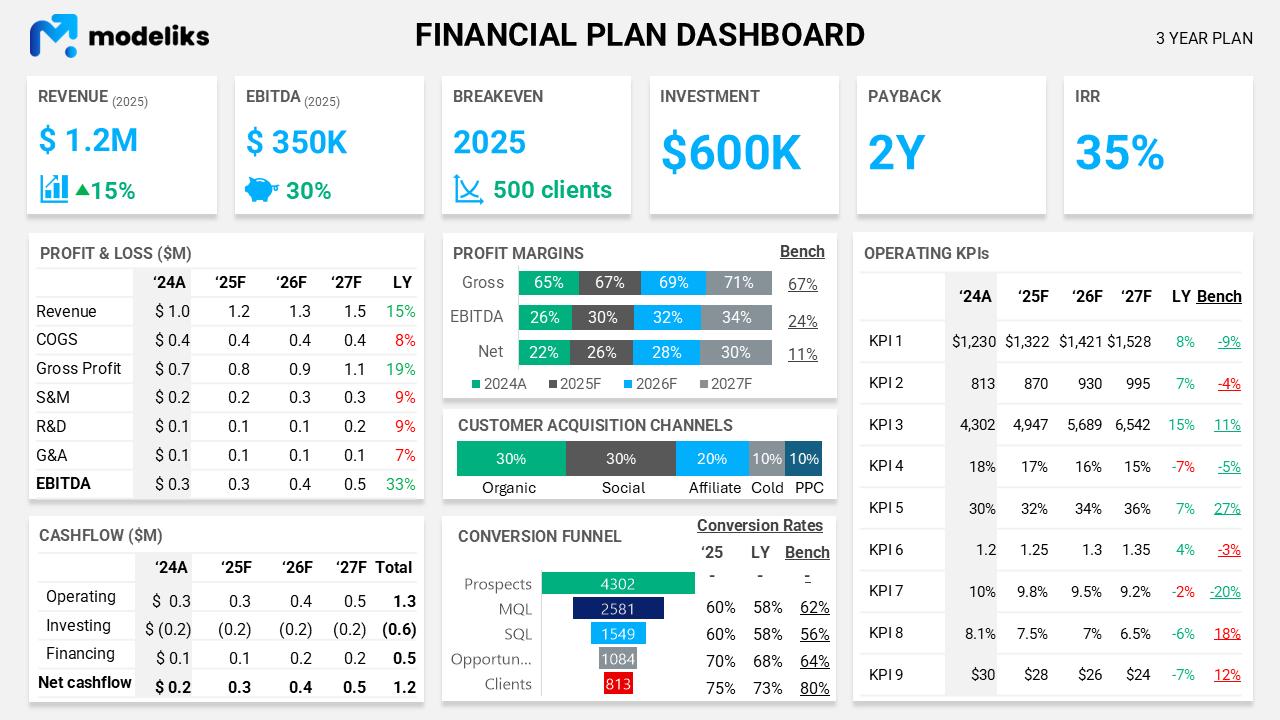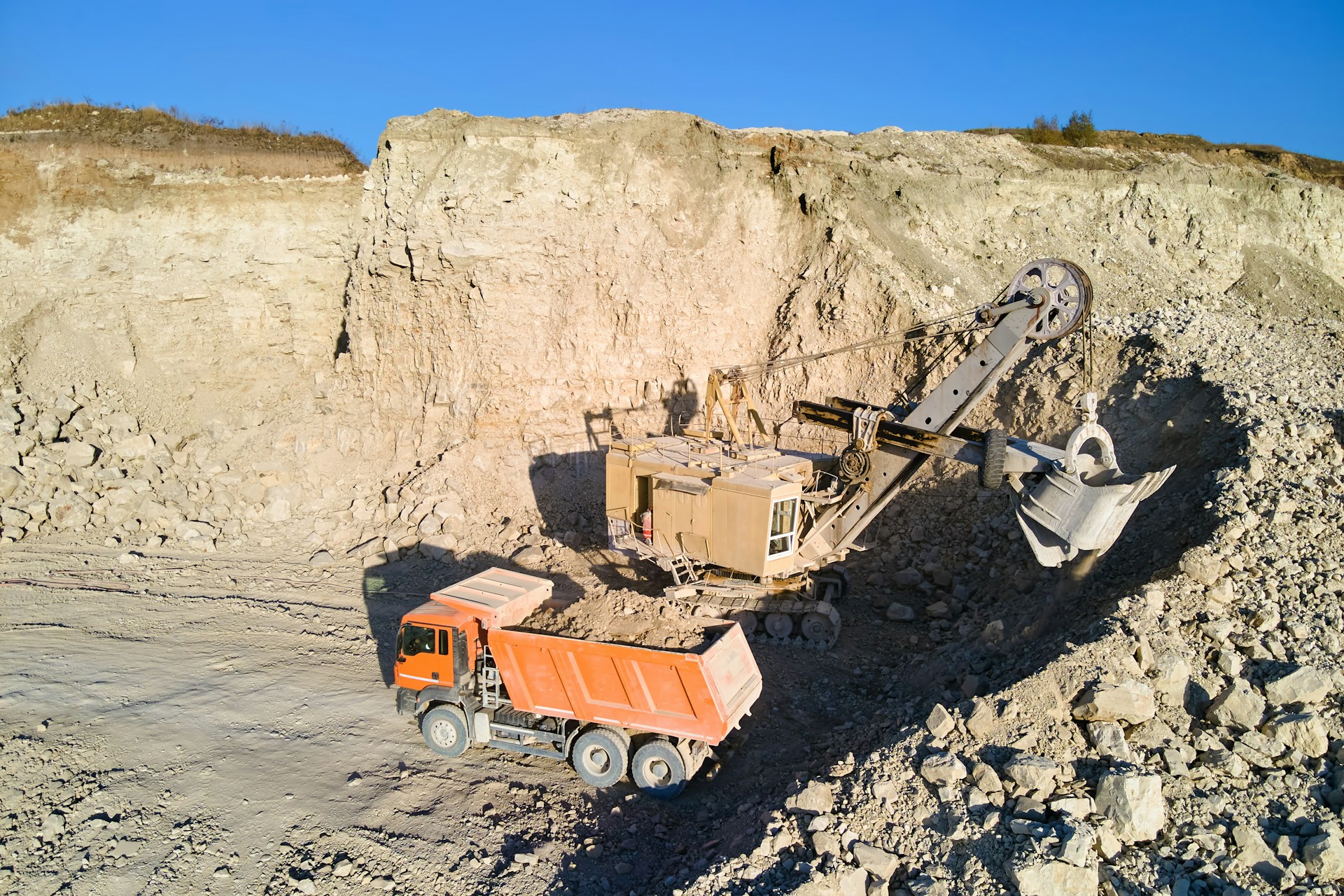Our Sand and Gravel Extraction Financial Model Structure covers all the essential aspects you need to consider when starting or scaling a Sand and Gravel Extraction business. By following this structure, you can better understand your revenue streams, costs, and assets, helping you optimize profitability and strategically plan for growth.
The Sand and Gravel Extraction financial model delineates typical revenues, direct costs, employees, expenses, and assets necessary for consideration when starting or growing your Sand and Gravel Extraction business. This model may also yield insights into new and profitable revenue streams; however, it aids in optimizing operations and expanding market presence. The Sand and Gravel Extraction Financial Model Structure is essential; although it seems complex at first, understanding it can greatly enhance decision-making because of its comprehensive approach.
Revenues
- Bulk Sales: Calculated by multiplying the volume of sand or gravel sold in tons by the price per ton.
- Retail Sales: Prices for smaller quantities sold directly to consumers or small businesses.
- Contractor Agreements: Revenue generated through long-term contracts with construction companies.
- Custom Orders: Special or bespoke orders that may require a premium price.
- Transportation Services: Additional charges for delivering materials to client sites.
- Waste Material Sales: Profits from selling by-products or waste materials to other industries.
- Leasing Equipment: Income from leasing extraction equipment to other businesses because this is a strategic revenue stream.
Cost of Goods Sold
- Extraction Costs: Expenses concerning mining processes, including labor and machinery, can vary significantly; however, they are critical to overall profitability.
- Processing Costs: The expenditures involved in cleaning, cutting, and preparing materials for sale often rise unexpectedly.
- Transportation Costs: Expenditures for shipping materials to customers, which can fluctuate based on distance and demand.
- Packaging Costs: Associated with protecting goods during transport, are sometimes underestimated because they play a crucial role in maintaining product integrity.
- Utility Costs: Water and power expenses consumed during operations must be factored in, as they impact the bottom line.
Need a business plan?
Create one with Modeliks AI in the next hour!
AI powered business planning for Startups and SMEs.
Employees
- Operations Manager: Oversees daily operations and ensures smooth workflow.
- Site Supervisors: Manage teams on extraction sites, ensuring safety and efficiency.
- Machine Operators: Skilled operators handling excavation and processing machinery because Logistics Coordinators plan and execute transportation and delivery schedules.
- Sales Representatives: Drive sales efforts; although they also maintain customer relationships, this is crucial for success.
Operating Expenses
- Rent: Lease payments for land or facilities.
- Utilities: Ongoing expenses for electricity, water, gas; these costs can add up quickly.
- Maintenance: Regular servicing and repairs of machinery and vehicles is essential; however, it can be overlooked.
- Insurance: Coverage for equipment, liability, business operations is crucial because it offers protection.
- Marketing: Strategies and materials for promoting business services is vital, but it requires careful planning.
- Office Supplies: Expenditures for administrative and office needs, necessary although sometimes underestimated.
- Professional Fees: Payments for legal, accounting, and consultancy services can strain budgets; this is often a concern.
- Licenses and Permits: Fees for legal operations and compliance are required, but they can be burdensome.
- Safety Equipment: Costs for protective gear for employees is non-negotiable because employee well-being is paramount.
- Travel Expenses: Costs related to business travel and transportation can be significant; however, they are often necessary for growth.
Assets
- Extraction Equipment: Essential machinery for mining activities is crucial.
- Processing Facilities: Structures needed for cleaning and preparing materials.
- Transportation Vehicles: Trucks and trailers are vital for material delivery.
- Support Equipment: Ancillary tools used in operations, however, office furniture and equipment are also necessary for administrative work.
Need Help?
Together, We Grow
Modeliks is more than a software, We are trusted advisors
OUR ADVISORY SERVICES
Financial Modeling | Reporting & Analysis | Valuation | Business Planing
Funding Options
- Bank Loans: Traditional financing options through banking institutions exist, however, they often come with strict terms.
- Venture Capital: Equity funding in exchange for partial ownership of the business can be appealing, but it might lead to loss of control.
- Equipment Leasing: Financing options specifically for purchasing machinery; this can alleviate cash flow pressures.
- Grants and Subsidies: Government or private sector funds that do not require repayment, although they might be competitive to obtain.
- Private Investors: Individuals who contribute capital in exchange for returns can also be vital sources of funding.
The Sand and Gravel Extraction Financial Model Structure
A truly professional Sand and Gravel Extraction financial model is based on the operating KPIs (aka “drivers”) relevant to the Sand and Gravel Extraction business .
- Production Volume measures total output capability in tons and affects revenue forecasts significantly.
- Machine Uptime indicates the percentage of operations time machines are functional; this impacts efficiency directly.
- Material Quality reflects the grade and standard of extracted materials, influencing pricing considerably.
- Market Demand involves an analysis of construction trends for planning sales efforts effectively.
- Fuel Costs have a direct relationship to operational expenses due to machinery usage, which can fluctuate.
- Labor Efficiency , or productivity rates of employees, is tied to overall output, meaning that optimizing this can lead to greater profitability.
- Safety Incidents Frequency of on-site accidents, affecting operational costs and morale.
- Customer Retention Rate Percentage of repeat business indicating customer satisfaction.
- Lead Time Duration from order reception to delivery, impacting customer satisfaction significantly.
Driver-based financial planning is a process often referred to as identifying the key activities or ‘drivers’ that hold the highest impact on business results; however, it also involves building financial plans around these activities. This approach allows one to establish relationships between financial outcomes and the resources needed to achieve them, such as personnel, marketing budgets, and equipment. If you wish to learn more about driver-based financial planning and why it is the optimal method for planning, you can watch the founder of Modeliks explain it in the video below.
The Financial Plan Output
The objective of the financial forecast outputs is to enable you, your management, board, or investors to quickly comprehend how your Sand and Gravel Extraction financial model will perform in the future. Additionally, it is essential to gain comfort that the plan is thoroughly considered, realistic, and achievable. You must understand what investments are needed to implement this plan and what the expected return on the investment will be. To achieve these goals, here is a one-page template to effectively present your financial plan.

However, apart from this one-page summary of your plan, you will also need the three projected financial statements, as they are crucial for a comprehensive understanding of the financial landscape.
- Profit and Loss
- Balance Sheet
- Cash Flow Statement
Sand and Gravel Extraction Financial Model Summary
A professional Sand and Gravel Extraction financial model can help you think through your business, identify the resources you need to achieve your targets, set goals, and measure performance because this creates a pathway to raise funding. However, making confident decisions is crucial for managing and growing your business, although it can be challenging.
If you need help with your financial plan, try Modeliks , a financial planning solution for SMEs and startups or contact us at contact@modeliks.com and we can help.
Author:
Blagoja Hamamdjiev
, Founder and CEO of
Modeliks
, Entrepreneur, and business planning expert.
In the last 20 years, he helped everything from startups to multi-billion-dollar conglomerates plan, manage, fundraise, and grow.

TAKE MODELIKS FOR A SPIN
Not sure which plan?
Start with a 15 days free trial.
You will have access to the full functionality of Modeliks. The only restriction in the free trial is that you cannot download or share your business plan outside Modeliks. Credit card is not required to subscribe for the free trial.






